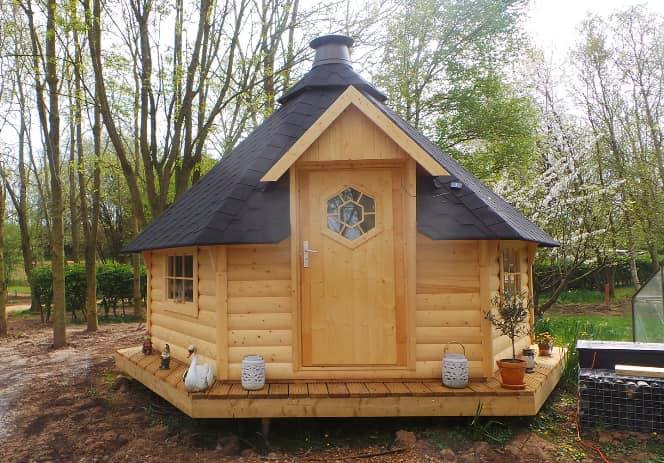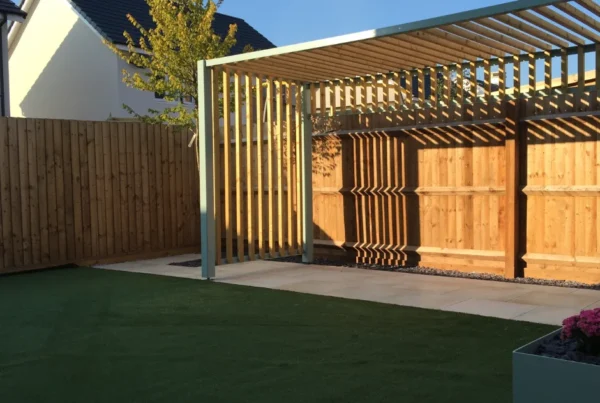Install garden buildings the greener way with ground screws
No matter where you live in the world, we are all surrounded by concrete. Concrete is one of the main materials used in the building industry. Concrete is environmentally unfriendly and until now, the only way companies have been able to put up garden buildings, fencing, and decking is by creating foundations and concrete bases to place these on. However, there are alternatives: one of these is a new, environmentally friendly product on the market that is eliminating the need to create concrete bases. This article will explore the reasons why concrete is not good for our environment; what alternatives are available; and the pros and cons of these.
How does cement nowadays differ from hundreds of years ago?
Hydraulic cement, better known as Portland cement, is the modern artificial type of cement used in the construction industry. After the process of thermal decomposition of calcium carbonate to produce clinker (CaCO3 (limestone) + thermal energy > CaO (lime) + CO2), the clinker is ground with gypsum to create a powder (Portland cement). In contrast, non-hydraulic cement produced by the Romans and other ancient civilisations, was hardened by exposure to carbon dioxide (naturally in the air) without the need for water.
How is concrete made?
Elements are extracted from earth (e.g. sand, gravel, limestone, granite) which are then mixed with cement material and water, which binds these materials together to create concrete.
What are some reasons why concrete is not environmentally friendly?
Production results in high carbon emissions
- Cement is a key ingredient in concrete
- Cement production accounts for approximately 5% of the world’s C02 emissions
- Cement production ranks third in the production of manmade CO2 worldwide after transport and energy generation
- CO2 is emitted at two stages of cement production:
- The first stage is as a by-product of burning fuel to create enough heat to drive the production process
- The second stage is thermal decomposition of calcium carbonate to produce clinker: CaCO3 (limestone) + thermal energy > CaO (lime) + CO2
- To produce one tonne of cement (40 standard bags), 780kg of CO2 is released. That’s almost 20kg of CO2 per bag of cement!
Concrete has lasting effects for the future
- Concrete mix which is non-permeable causes major soil erosion and flooding. Toxic waste is transported along with rainwater; if the concrete is non-permeable, this mixture of toxic waste will run off the concrete and be absorbed by the earth’s top soil (affecting plants), or nearby water sources (affecting aquatic life and tap water)
- When buildings are demolished in the future, concrete is a waste material that is hard to dispose of and is difficult to reuse. Concrete dust is also released as a result of demolition which is harmful to health when inhaled
- Water is key to the utilisation of cement. Water itself is an important resource, so unnecessary use of this should be avoided
What are the alternative solutions?
- Use of recycled and sustainable materials to make cement: certain suppliers will provide these and although this is a better solution than concrete and cement it is not a totally green solution
- Rammed earth: this method involves compacting gravel, clay, sand, and water to strengthen the rammed earth. However, 5-10% cement often needs to be added to this mixture which, as well as being very time-consuming, diminishes its green credentials
- Ground screws: these altogether eliminate the need to create concrete bases for temporary structures like garden buildings, cabins, decking, fencing, signs, play area equipment, etc.
How are garden buildings normally installed?
Foundations are dug and then concrete is poured to create the base for a garden room and, on many occasions, a damp-proof course is required. This normally takes at least 2 days or more depending on the size, and only then can the garden building be built on top.
What are Stop Digging Ground Screws?
Originally founded in Sweden in 2012, these large steel ground screws are used to replace pile drivers and concrete during construction. This unique screw has been designed to withstand weather conditions in the Nordic climate and can be installed all year round. Different sized and shaped screws are used depending on land ratio, load, and type of project.
The size of each screw ranges from 865mm to 2500mm in length, and there are a variety of different width sizes available.
How do the ground screws work?
- The area is checked with specialist machinery for underground pipes and cables
- An experienced team measure and mark out the footprint of the building accurately
- String lines and ground paint mark the area where the building and screw locations will be
- The holes are pre-drilled to deal with any obstructions and ensure accuracy in positioning the ground screws
- The stop digging ground screws are placed in the pre-drilled holes
- A laser level is used to set the best height for your requirements
- The screws are drilled into the ground within minutes
- A timber frame and building can now be placed on top
What are the green benefits to using these ground screws?
- No concrete is involved – these screws eliminate the need for a concrete base.
- No damage to the ground – creating foundations and concrete bases damages the ground and surrounding area, these ground screws are drilled directly making no mess.
- No waste – digging out foundations creates a substantial amount of waste and the screws do not create any.
Is this an expensive option?
Surprisingly, most garden room suppliers find that using these ground screws is cheaper than the labour and material cost of digging foundations and creating a concrete base!
The whole process is much quicker than creating a concrete base so time is also saved.
Each screw price varies dependant on size and location but to supply and install, each screw starts from £45+VAT and one screw covers approx. 1 square metre.
Can I purchase these screws and install them myself?
No, Stop Digging uses specialist machinery to install the screws and the certified installers ensure they gently install them correctly, so they offer a supply and installation price with a guarantee of 25 years on the screws.
What happens if there is a rock in the ground?
The hole is pre-drilled before installing any ground screws, so smaller stones or gravel will be pushed aside in the boring process, and medium stones broken. Large rocks cause more of an issue, as they would if you came across one whilst digging. Experienced installers will come up with an effective solution and are used to tackling any challenges that may arise.
Are the screws reusable?
Yes, the screws are reusable and so perfect for temporary structures that might change location.
Conclusion
The world has a long way to go in finding alternatives to concrete since it is used in nearly all construction. However, where we find alternatives we can do our part and use an environmentally friendly option, that will help start to decrease the impact concrete is having on carbon emissions. These new ground screws are one way we can help if we are planning to have a garden building, fencing, decking or any other temporary structure.





